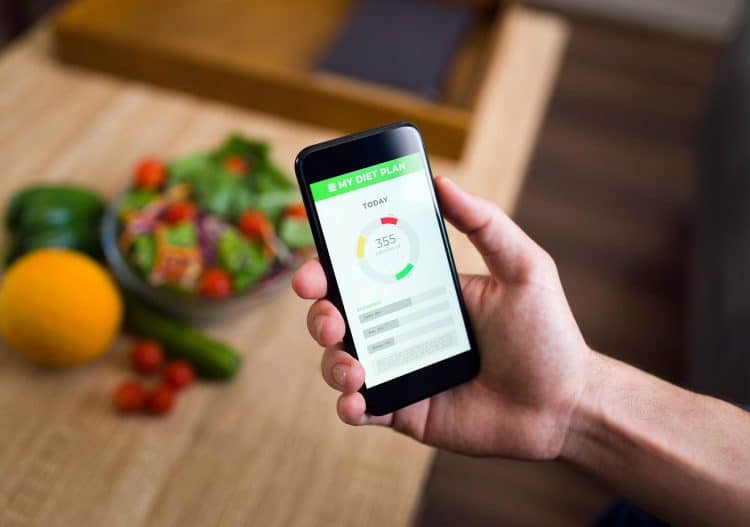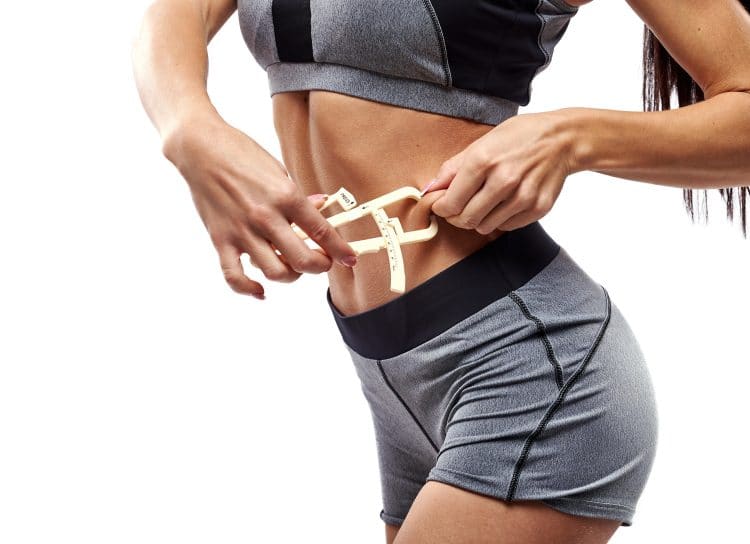Being overweight or obese is often thought of as a modern health problem. After all, obesity levels have skyrocketed in the last few decades. However, contrary to this point of view, the medical profession has been concerned about body composition for a lot longer than this – many centuries, in fact.
The Ponderal Index was first used in the 1920s to compare height and weight to determine body composition. It’s been proposed as an alternative to body mass index (BMI), which is a more widely used and well-known comparison of height vs. weight.
In this article, we reveal what the Ponderal Index is, how it’s calculated, what the results mean, and the pros and cons of this particular body composition assessment.
Ponderal Index Calculator
What is the Ponderal Index, and How is it Calculated?
Swiss physician Fritz Rohrer invented the Ponderal Index (PI) in the early 1920s. It’s also known as the Corpulence Index (CI) and Rohrer’s Index, after its inventor. PI considers the relationship between height and weight to determine estimated body composition.
The Ponderal Index is very similar to Body Mass Index. The main difference is that the mass is calculated to the third power of height rather than the second power.
BMI is calculated like this:
- BMI = weight / height²
Whereas PI is calculated like this:
Level Up Your Fitness: Join our 💪 strong community in Fitness Volt Newsletter. Get daily inspiration, expert-backed workouts, nutrition tips, the latest in strength sports, and the support you need to reach your goals. Subscribe for free!
- PI = weight / height³
It’s generally accepted that PI is a more specific and reliable method for determining leanness or body fat in individuals who are taller or shorter in stature. BMI seems to be a more reliable indicator of body fat in populations of average height.
Compare your BMI to your PI to see how these different calculations affect your score.
PI (and BMI, for that matter) are not accurate assessments of body composition, i.e., body fat percentage. Instead, they estimate fat mass based purely on height and weight. As there are several additional variables that affect PI and BMI calculations, these methods should be viewed as estimates and not absolute assessments of body composition.
How To Use The Ponderal (PI) Calculator
Our Ponderal Index calculator is very straightforward to use. Just follow these step-by-step instructions:
- Select your preferred units – imperial (feet, inches, and pounds) or metric (meters, centimeters, and kilograms.)
- Choose between adult or child settings. For this calculator, adults are 16 years of age or older.
- Enter your height and your weight. Be as accurate as you can.
- Hit “calculate.”
What Do the Results Mean?
Compare your results to the chart below:
| PI | Classification |
| 8-11 | Underweight |
| 11-15 | Normal weight |
| 15-17 | Overweight |
| 17+ | Obese |
While a reading of between 11-15 is considered normal, for adults, for infants/children, a score of between 2.2 and 3 is considered normal.
Your PI can then be used to determine your risk of certain health and medical conditions. A high PI (15+) is linked to an increased risk of (2):
- Type 2 diabetes
- High blood pressure
- Sleep apnea
- Heart disease
- Metabolic syndrome
- Higher risk for some forms of cancer (colon, rectum, gallbladder, kidney, breast)
- Complications during pregnancy
- Osteoarthritis
- Fatty liver disease
Factors Affecting Ponderal Index
While PI compares your weight to your height, it does not account for what your weight is made up of, which is your body composition. For example, you could weigh 200lbs with 8% body fat or weigh the same 200lbs with a body fat percentage of 35%.
Needless to say, one would look very different from the other. And the higher level of body fat is more likely to affect your health and long-term wellness.
However, despite these glaring differences, the Ponderal Index score would be the same.
Being lean, even if you are heavy, reduces your risk of suffering many of the diseases associated with being overweight, despite your PI score suggesting otherwise.
Subsequently, when assessed purely according to PI, exercisers may be unfairly discriminated against. For example, a lean bodybuilder, powerlifter, or even just someone who enjoys lifting weights recreationally may be told that they are overweight or obese despite actually being pretty lean.
Similarly, a very lean endurance athlete may be labeled as dangerously underweight simply because they have a lower than average body fat percentage.
Your bodyweight is also affected by how much water you’re carrying, i.e., your hydration levels. For example, a liter of water weighs one kilo or about 2.2 pounds, so all you need to do is pee or sweat a lot to lower your Ponderal Index.
However, losing water weight won’t change your body composition (body fat percentage). As an exerciser, your hydration levels probably fluctuate throughout the day, and with it, your PI.
So, in summary, if you are more muscular than average or are holding a lot of water, your Ponderal Index score will be higher. This result may suggest that you are overweight, even when you are not.
While there is nothing to stop you from using the Ponderal Index to track your progress, you should not worry too much if you get a higher-than-expected score. Providing you are not overly fat, your high result is probably due to your greater-than-average muscle mass.
For that reason, most exercisers should rely on assessments that determine actual body fat percentage rather than height-to-weight comparisons like PI and BMI.
Level Up Your Fitness: Join our 💪 strong community in Fitness Volt Newsletter. Get daily inspiration, expert-backed workouts, nutrition tips, the latest in strength sports, and the support you need to reach your goals. Subscribe for free!
How to Improve Your Ponderal Index Score
If you are lean and muscular, the only way to lower your Ponderal Index score would be to lose muscle mass. Needless to say, as muscle is so hard to build, you probably don’t want to do this. So, if you aren’t overly fat, there is no reason to try and improve your PI score. Just accept that calculations that compare height to weight often discriminate against muscular exercisers.
That said, if you know you are carrying excess body fat, you can improve your Ponderal Index by getting leaner and losing weight.
Strategies for achieving this goal include:
1. Create a calorie deficit
Body fat is unused, stored calories. When you eat too much, your body converts excess calories into fat and saves them for later. That’s all fat is – stored energy.

To burn off unwanted body fat, you need to consume fewer calories. This is called a negative energy balance or calorie deficit. Faced with this energy shortfall, your body has no option but to use stored body fat for energy.
While you could just eat less and hope that you create a calorie deficit, a more structured approach normally works best.
Determine your Total Daily Energy Expenditure using our TDEE calculator and subtract 500 from your result. That’s the number of calories you need to eat each day to lose weight. Track your food intake and ensure you consume 500 calories below your TDEE.
2. Increase your daily energy expenditure
While eating less is an essential part of losing weight, you’ll get even better results if you burn more calories a day through exercise and physical activity. In metabolic terms, these things are called the Thermal Effect of Activity (TEA) and Non-Exercise Thermogenesis (NEAT).
Even small amounts of daily TEA and NEAT can have a significant impact on your rate of fat burning and weight loss. Try to do at least an hour of physical activity every day and more if possible.
3. Eat more protein
While all types of food contain calories, the kind of food you eat also has an impact on your basal metabolic rate (BMR), which is the number of calories your body burns at rest. This is called the Thermal Effect of Food, or TEF.
Of the three food groups or macros, protein has the highest TEF. Eating protein can increase your metabolism by as much as 30%, leading to faster, easier weight loss. In addition, high-protein foods tend to be more satiating than high-carb foods, keep your blood glucose levels stable, and help prevent muscle loss.
Use our protein calculator to determine your ideal protein intake.
4. Get more sleep
People who are sleep deprived are more likely to skip workouts and cheat on their diet than people who get plenty of sleep and are well-rested. However, getting enough sleep increases energy and determination and lowers cravings for sugar and carbs.
Make sure you get 7-8 hours of sleep per night. That’s on weekdays and NOT just at the weekend! In most cases, getting more sleep means going to bed earlier. So, turn off the TV, put down your tablet, and set your phone to airplane mode so you can enjoy a full night of restful, restorative, uninterrupted sleep.
5. Pick a sustainable diet
When it comes to losing weight, there are lots of different diets to choose from. Each one works for someone, but some work better than others. So, the trick is to find a diet you can stick to for as long as it takes to reach your weight loss target.
If you hate your diet, you are much less likely to follow it without cheating. In contrast, if you enjoy your meals and snacks, you have no real reason to cheat or quit.
So, rather than choosing the latest celebrity-endorsed diet plan, use your own food preferences to help you choose the best diet for you. Look for a diet you know you’ll be able to follow for the foreseeable future and not one you’ll start to hate within a few days.
For many people, the most straightforward weight loss eating plan is intermittent fasting. You don’t even have to change your current diet very much. Instead, you just skip breakfast and your mid-morning snack and start eating later in the day. Providing you don’t overeat when you break your fast, this approach usually leads to easy and sustainable weight loss.
Read more about intermittent fasting here.
Ponderal Index – Wrapping Up
The Ponderal Index isn’t the most accurate determination of body composition. For example, your muscle mass is not accounted for.
Active individuals with greater than average muscle mass are often categorized as overweight when they’re actually pretty lean. Hydration levels can also affect your PI. However, PI is relatively accurate and reliable for average people and less active individuals.
Use our PI calculator as a guideline for determining a healthy weight range.
References:
1– PubMed: The use and interpretation of Ponderal Index and other weight-height ratios in epidemiological studies https://pubmed.ncbi.nlm.nih.gov/5455357/
2– US Department of Health and Human Services: Health risks of being overweight https://www.niddk.nih.gov













